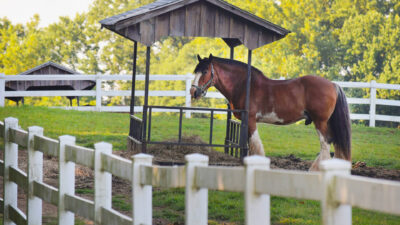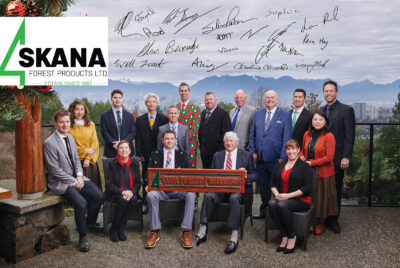By: Jackson Morrill
President & CEO of the American Wood Council
The American Wood Council (AWC) is continuing important research to further the use and understanding of mass timber.
In the fall, AWC successfully completed two full-scale cross-laminated timber (CLT) diaphragm tests to provide strength and deformation data important for evaluating CLT diaphragm resistance to lateral wind and earthquake forces. The tests were completed at Weyerhaeuser’s ISO 17025 accredited test facility in Federal Way, Washington. The results of these tests will allow researchers to identify potential diaphragm design for further advance use of CLT in floor and roof diaphragms of building structures.
The research used the CLT diaphragm design approach incorporated in the 2021 Special Design Provisions for Wind and Seismic (SDPWS-2021), which relies upon the design of wood members and connections in accordance with applicable requirements of the 2018 National Design Specification® (NDS®) for Wood Construction (NDS-2018). The tests exceeded strength targets and provided strength and deformation data important for evaluating CLT diaphragm resistance to lateral wind and earthquake forces.
The tested diaphragms were designed by AWC engineers with assistance from a task group that included members of the AWC Wood Design Standards Committee (WDSC), product manufacturers, and designers with CLT diaphragm project experience. The diaphragms were constructed using three-ply CLT panels and common details that included recessed nailed plywood splines for connection of adjacent CLT panels and self-tapping screws for attachment of CLT panels to supporting glued laminated timber framing.
In one configuration, the glued laminated timber beams were designed to serve as diaphragm tension and compression chords. In the other configuration, a steel strap and the CLT panels themselves were designed to carry the diaphragm chord forces. The multiple configurations highlight the versatility afforded by CLT panels in diaphragm applications.
The diaphragm lateral capacity (e.g. resistance to wind and earthquake forces) in each direction was evaluated using procedures in general accordance with ASTM E455 Standard Test Method for Static Load Testing of Framed Floor or Roof Diaphragm Constructions for Buildings.
Products procured for the testing included: Douglas Fir glued laminated timber support beams supplied by Structurlam; Spruce-Pine-Fir CLT panels produced by Structurlam’s facility in Penticton, BC; 23/32” Douglas Fir Structural 1 panels used to fabricate plywood splines; and self-tapping screws and metal strap supplied by MTC Solutions of Surry, BC.
AWC is an accredited standards developer by the American National Standards Institute. The NDS and SDPWS standards are developed through a consensus process under the WDSC. The SDPWS-2021 and the NDS-2018 are reference design standards in the 2021 International Building Code.






